How to Winterize an Outboard Motor (2-vs-4-Stroke)
The process of winterizing an outboard motor can differ depending on whether you have a 2-stroke or 4-stroke engine. Both types of engines require specific steps to ensure they are properly protected during the winter months. In this article, we will walk you through the steps you need to take to winterize your outboard motor, whether it's a 2-stroke or 4-stroke engine.
Winterizing a 2-stroke and 4-stroke outboard motor both require flushing, fuel stabilizer, and fogging oil. A 2-stroke motor requires draining and replacing the gear oil and spraying fogging oil into each cylinder, while a 4-stroke motor requires changing the oil and filter and spraying fogging oil into the air intake.
When winterizing your outboard motor, fogging oil is necessary. Let's explore the use of fogging oil in the whole winterization process.
Summary
- In a 2-stroke engine, the combustion cycle is completed in two strokes of the piston, while in a 4-stroke engine, it takes four strokes.
- Some tips to properly maintain an outboard motor include storing it in a dry and secure location while in an upright position and keeping it covered with a protective cover.
- Draining water from an outboard motor prevents damage to the engine block, lower unit, and other components and ensures the longevity of your motor.
- Fogging oil helps prevent rust and corrosion and lubricates the internal parts of your outboard motor, prolonging its life and ensuring that it runs smoothly for years to come.
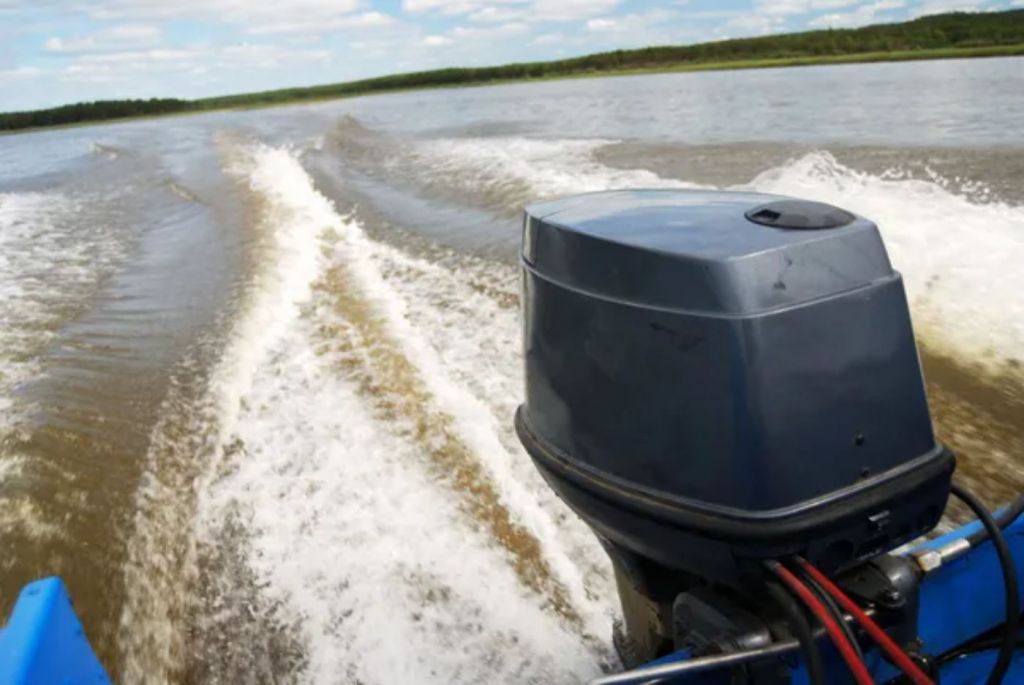
On this page:
Winterizing Your Outboard Motor: 2-Stroke vs 4-Stroke
The table below shows the different steps in the winterization of a 2-stroke and 4-stroke outboard motor:
| Winterization Step | 2-Stroke Outboard Motor | 4-Stroke Outboard Motor |
|---|---|---|
| Flushing | Flush engine with fresh water to remove salt or debris | Flush cooling system with fresh water to remove salt, dirt, or debris |
| Adding fuel stabilizer | Add stabilizer to fuel tank to prevent fuel breakdown | Add stabilizer to fuel tank to prevent fuel breakdown |
| Running the engine | Run engine to distribute stabilizer throughout fuel system | Run engine to distribute stabilizer throughout fuel system |
| Fogging the engine | Remove spark plugs and spray fogging oil into each cylinder | Spray fogging oil into air intake of engine |
| Change the gear oil | Drain gear oil from the lower unit and replace with fresh oil | N/A |
| Battery maintenance | Remove battery and store in cool, dry place | Disconnect battery and store in cool, dry place |
While both 2-stroke and 4-stroke outboard motors require flushing, fuel stabilizer, and fogging oil, the specific steps involved in winterizing each type of motor are different.
The 2-stroke motor requires the draining and replacement of the gear oil, while the 4-stroke motor requires changing the oil and filter. Additionally, the 2-stroke motor requires fogging oil to be sprayed into each cylinder, while the 4-stroke motor requires fogging oil to be sprayed into the air intake of the engine.
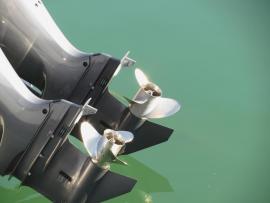
Do You Have to Winterize an Outboard Motor? (2-Stroke vs. 4-Stroke)
The main difference between 2-stroke and 4-stroke outboard motors is the number of strokes it takes to complete the combustion cycle. In a 2-stroke engine, the combustion cycle is completed in two strokes of the piston, while in a 4-stroke engine, it takes four strokes.
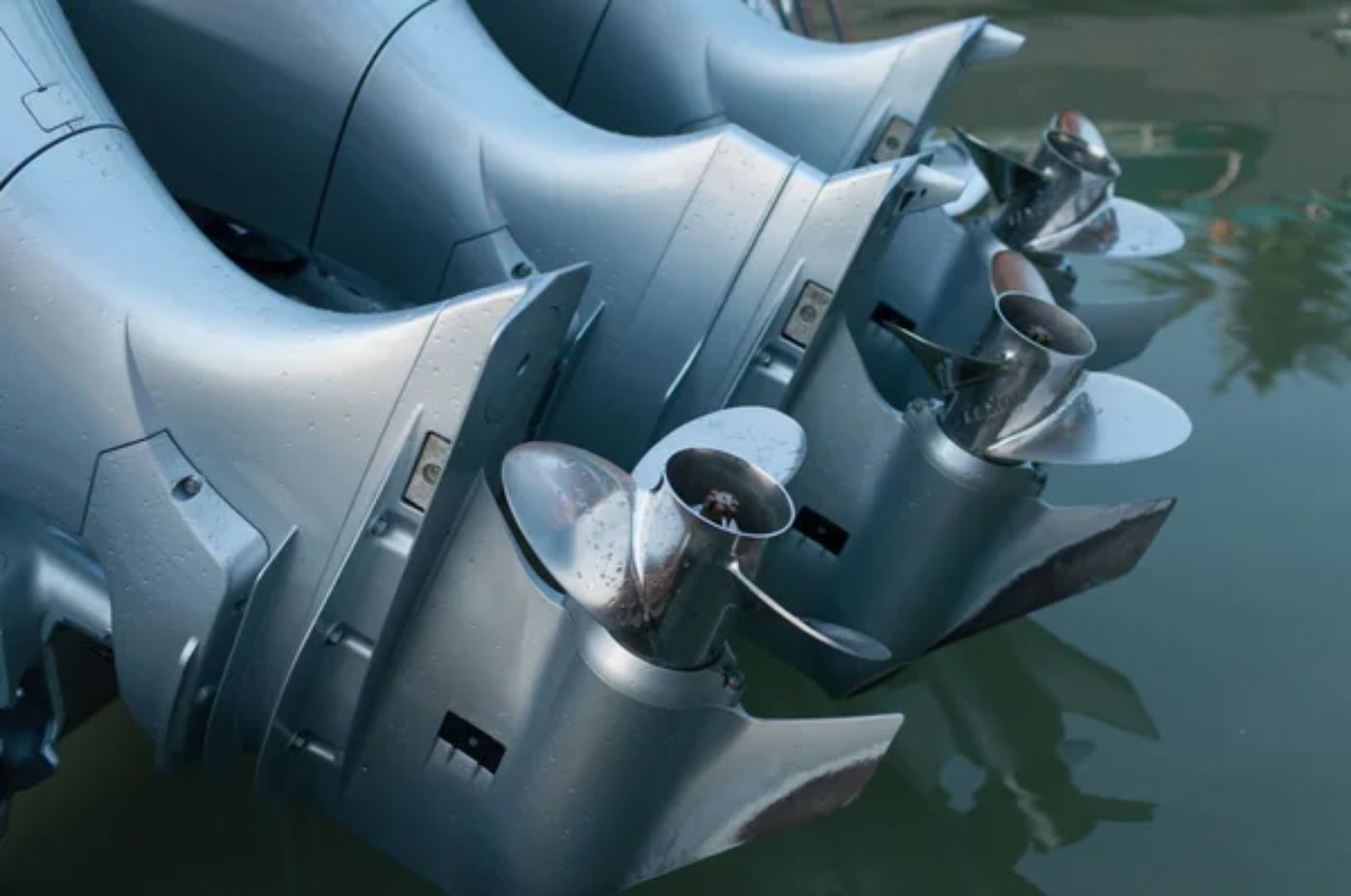
In a 2-stroke engine, the piston moves up and down twice for every combustion cycle.
- The first stroke is the compression stroke, where the piston compresses the fuel and air mixture.
- The second stroke is the power stroke, where the explosion of the mixture pushes the piston back down. The exhaust and intake strokes are combined into one stroke, where the piston moves up and down once, pushing out the exhaust and drawing in the fuel and air mixture.
In a 4-stroke engine, the piston moves up and down four times for every combustion cycle.
- The first stroke is the intake stroke, where the piston moves down and the intake valve opens to allow the fuel and air mixture into the cylinder.
- The second stroke is the compression stroke, where the piston moves up and compresses the mixture.
- The third stroke is the power stroke, where the spark plug ignites the mixture, causing an explosion that pushes the piston back down.
- Finally, the exhaust stroke pushes out the exhaust through the open exhaust valve.
The valve train in an outboard motor controls the opening and closing of the valves. The valves allow the fuel and air mixture to enter the cylinder and the exhaust to exit.
The valve train consists of the camshaft, which controls the timing of the valve opening and closing, and the lifters, pushrods, and rocker arms, which transfer the camshaft's motion to the valves.
Let's Winterize a 2-Stroke Outboard Motor
Step-by-step guide to winterizing a 2-stroke outboard motor
-
Flush the engine: Start by flushing the engine with fresh water to remove any salt or debris that may have accumulated during the boating season. Attach a garden hose to the flushing port and turn on the water. Allow the engine to run for a few minutes to ensure that all the water has been flushed through the system.
-
Add fuel stabilizer: Next, add fuel stabilizer to the fuel tank to prevent the fuel from breaking down and causing damage to the engine. You can follow the instructions on the stabilizer bottle carefully and add the appropriate amount of stabilizer to the fuel tank.
-
Run the engine: Start the engine and let it run for a few minutes to ensure that the stabilizer has been distributed throughout the fuel system.
-
Fog the engine: Fogging the engine is an important step in protecting it from rust and corrosion during the winter months. Remove the spark plugs and spray fogging oil into each cylinder. Then, crank the engine a few times to distribute the oil throughout the engine.
-
Change the gear oil: Drain the gear oil from the lower unit and replace it with fresh oil. This will help prevent any moisture from accumulating in the lower unit and causing damage to the gears.
-
Remove the battery: Finally, remove the battery from the boat and store it in a cool, dry place. Keep the battery charged throughout the winter to prevent it from freezing and becoming damaged.
Tools and materials required to winterize a 2-stroke outboard motor
| Material | Estimated Price |
|---|---|
| Fuel stabilizer | $10 - $20 |
| Fogging oil | $10 - $15 |
| Spark plug wrench | $5 - $10 |
| Protective cover | $20 - $50 |
| Propeller removal tool | $15 - $25 |
| Water flush kit | $20 - $30 |
- Fuel stabilizer: This is used to prevent the fuel from breaking down and becoming stale during the winter months.
- Fogging oil: This is used to prevent rust and corrosion from forming on the internal parts of the engine.
- Spark plug wrench: This is used to remove the spark plugs so that fogging oil can be sprayed into the cylinders.
- Protective cover: This is used to cover the motor and protect it from dust, dirt, and debris during the winter season.
- Propeller removal tool: This is used to remove the propeller from the outboard motor.
- Water flush kit: This is used to flush the motor with fresh water before winterizing it.
Tips for maintaining a 2-stroke outboard motor during the winter season
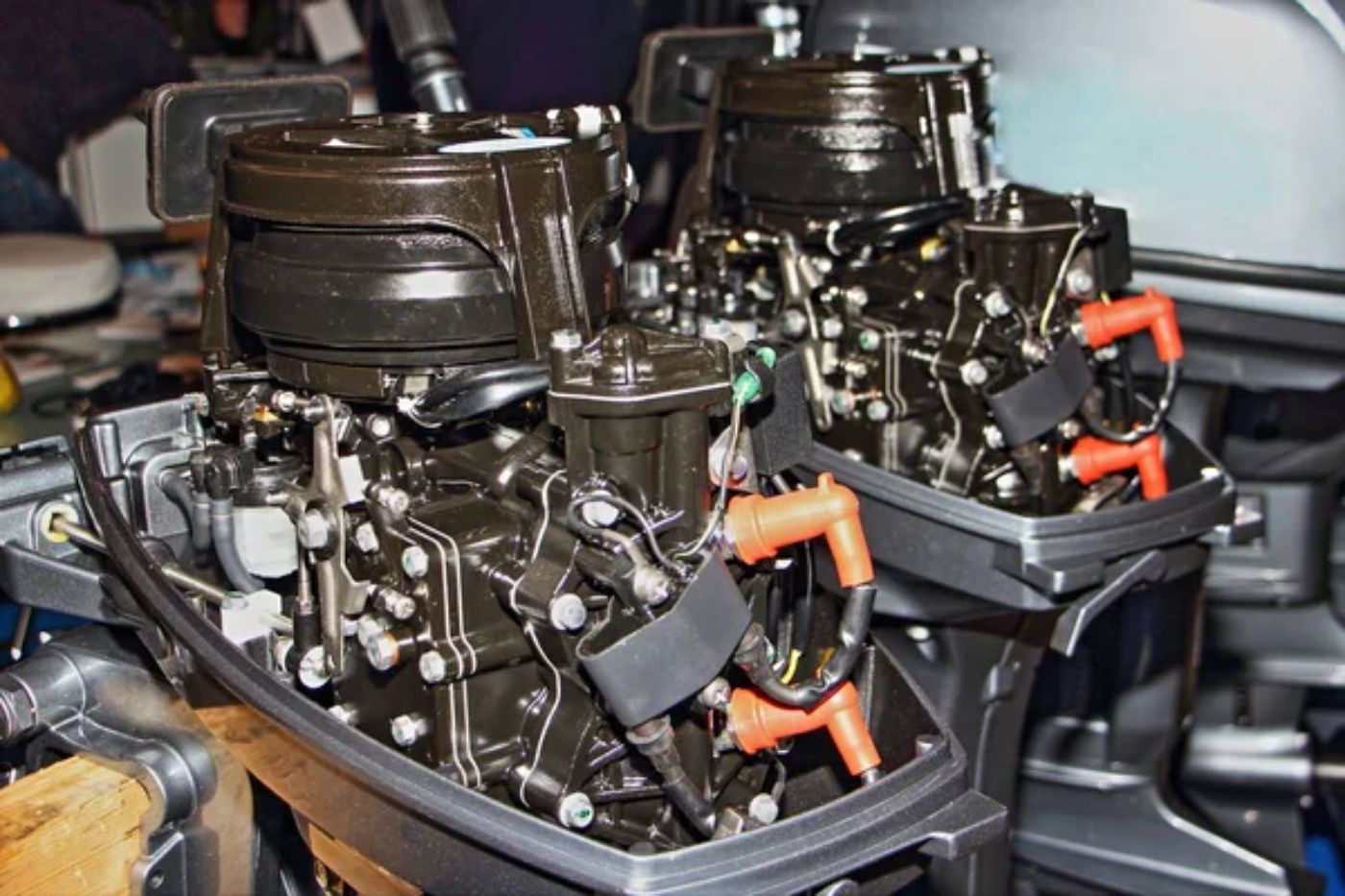
1. Store the motor in a dry and secure location
During the winter season, you need to store your 2-stroke outboard motor in a dry and secure location. This will help to protect the motor from the elements, such as rain, snow, and ice, which can cause damage to the motor. Additionally, storing the motor in a secure location will help to prevent theft and keep it safe.
2. Check the motor periodically
Check the motor periodically to ensure that it is still in good condition. You may need to check the fuel tank and lines for any leaks, as well as inspect the motor for any signs of damage or corrosion. By doing these, you can catch any potential issues early on and prevent them from becoming more serious.
3. Start the motor periodically
Starting the motor periodically and letting it run for a few minutes will help to keep it lubricated and prevent any rust or corrosion from forming. This is especially important if you are storing the motor for an extended period, as it can help to keep the internal parts of the motor in good condition.
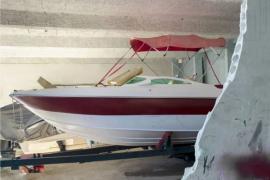
How Long Does Boat Winterization Last?
4. Store the motor in an upright position
Storing the motor in an upright position will help to prevent any water from accumulating in the lower unit, which can cause damage to the seals and other internal parts of the motor. Additionally, storing the motor in an upright position will help to save space in your storage area.
5. Remove the battery from the motor
Freezing temperatures can cause the battery to crack or become damaged, which can be expensive to replace. By removing the battery and storing it in a warm and dry location, you can ensure that it will be in good condition when you are ready to use the motor again.
Winterizing a 4-Stroke Outboard Motor
Step-by-step guide to winterizing a 4-stroke outboard motor
- Change the oil and filter: Changing the oil and filter will help to remove any contaminants that could cause damage to your engine during storage. Always follow the manufacturer's recommendations for the type of oil to use.
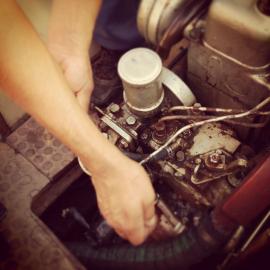
How Much Does a Boat Engine Oil Change Cost?
-
Flush the cooling system: Use fresh water to flush out the cooling system. This will help to remove any salt, dirt, or other debris that may have accumulated in the system. Run the motor for a few minutes to ensure that all of the water has been flushed out.
-
Add fuel stabilizer: Add fuel stabilizer to the fuel tank to prevent the fuel from breaking down during storage. This will help to prevent the formation of gum and varnish in the fuel system.
-
Run the motor: Run the motor for a few minutes to ensure that the fuel stabilizer has been distributed throughout the fuel system.
-
Fog the engine: Spray fogging oil into the air intake of the engine to protect the internal components from rust and corrosion during storage.
-
Disconnect the battery: Disconnect the battery and store it in a cool, dry place. This will help to prevent the battery from freezing and potentially damaging the terminals.
Tools and materials needed for winterizing a 4-stroke outboard motor
| Material | Estimated Price |
|---|---|
| Water flush kit | $20 - $50 |
| Engine oil and oil filter | $30 - $50 |
| Fuel stabilizer | $10 - $20 |
| Fogging oil | $10 - $20 |
| Battery storage container | $20 - $40 |
| Protective cover | $30 - $50 |
- Water flush kit: This is used to flush the motor with fresh water before winterizing it.
- Engine oil and oil filters: These are used to change the engine oil and remove any contaminants that may have accumulated during the season.
- Fuel stabilizer: This is used to prevent the fuel from breaking down and becoming stale during the winter months.
- Fogging oil: This is used to prevent rust and corrosion from forming on the internal parts of the engine.
- Battery storage container: This is used to store the battery in a warm and dry location during the winter season.
- Protective cover: This is used to cover the motor and protect it from dust, dirt, and debris during the winter season. Get some hacks on how to effectively cover your boat during the winter season in this article.
Tips for maintaining a 4-stroke outboard motor during the winter season:
- Store the motor in an upright position to prevent any water from accumulating in the lower unit.
- Check the motor periodically to ensure that it is still in good condition. This includes checking the fuel tank and lines for any leaks, as well as inspecting the motor for any signs of damage or corrosion.
- Start the motor periodically and let it run for a few minutes to keep it lubricated and prevent any rust or corrosion from forming.
- Charge the battery periodically to ensure that it is ready to use when the winter season is over.
- Check the propeller for any damage and clean it before storing it in a safe place for the winter.
- Keep the motor covered with a protective cover to prevent any dust, dirt, or debris from accumulating on it. If you want to make a DIY boat winter cover, you can check out this article to help you get started.
Draining Water From an Outboard Motor
Water left inside the motor can freeze and cause damage to the engine block, lower unit, and other components. Here's how to drain water from your outboard motor:
- Start by turning off the fuel supply to the motor. This will prevent fuel from getting into the water and polluting the environment.
- Tilt the motor up to the vertical position to allow any water inside the motor to drain out. You can use the tilt/trim switch on the motor or a tilt lock to hold the motor in place.
- Locate the water drain plug on the lower unit of the motor. It is usually located on the bottom of the lower unit, near the propeller. Refer to your owner's manual if you are unsure where it is located.
- Place a container underneath the drain plug to catch the water that will come out.
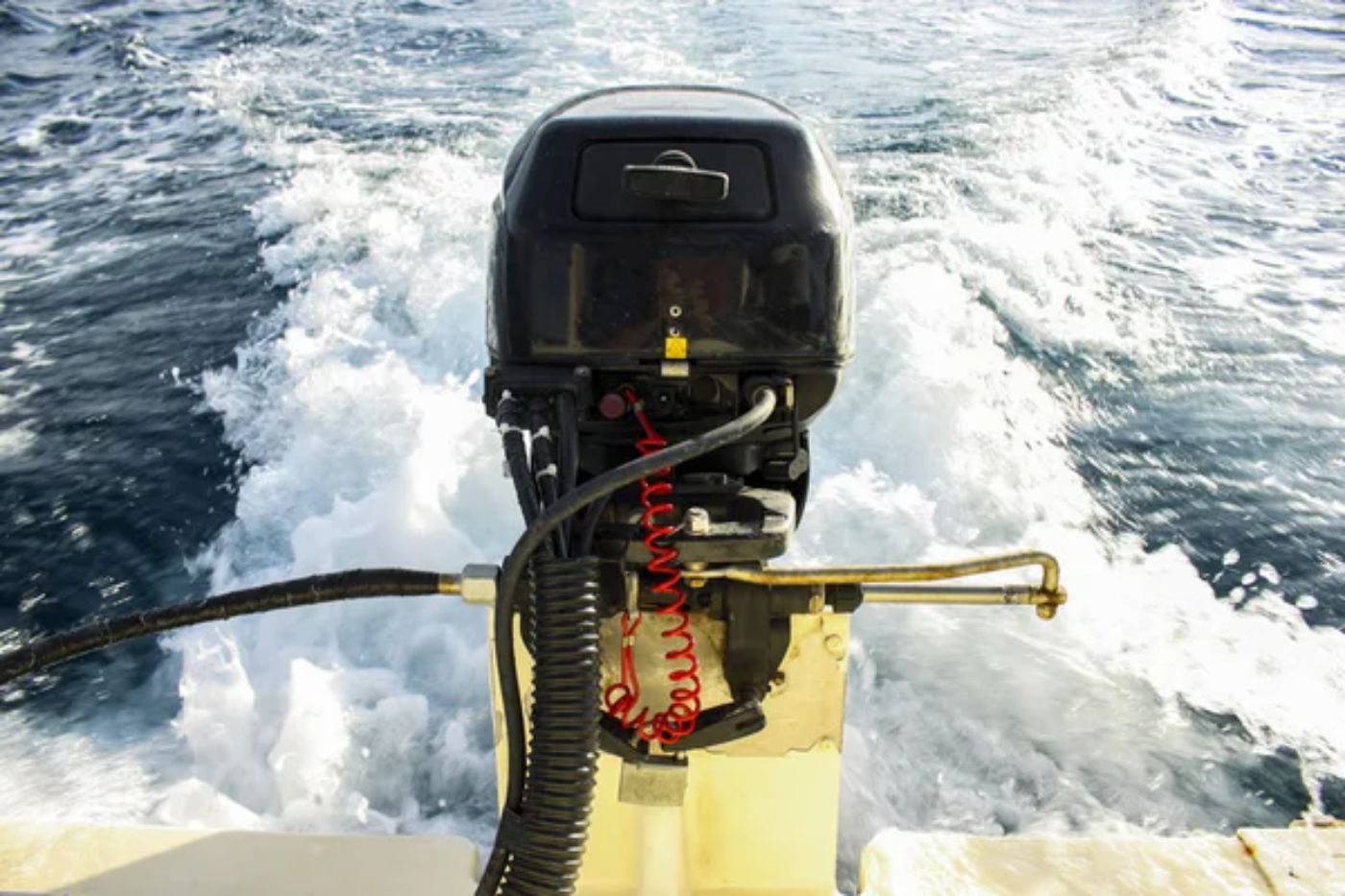
- Remove the drain plug using a wrench or pliers. Be careful not to drop the plug into the container.
- Allow the water to drain out completely. You can tilt the motor back and forth to help get all the water out.
- Inspect the drain plug for any damage or wear. Replace it if necessary.
- Once all the water has drained out, replace the drain plug and tighten it securely with a wrench or pliers.
What Does Fogging Oil Do?
Fogging oil is an oil that is specifically designed to protect the internal parts of your outboard motor from rust and corrosion during the off-season.
It is typically sprayed into the carburetor or intake manifold while the engine is running, coating the internal parts with a layer of oil that will protect them from moisture and other elements that can cause damage.
Benefits of using fogging oil
- Prevents rust and corrosion: The main benefit of fogging oil is that it helps prevent rust and corrosion from forming on the internal parts of your outboard motor. This is especially important if you live in an area with high humidity or saltwater exposure.
- Lubricates internal parts: In addition to preventing rust and corrosion, fogging oil also helps lubricate the internal parts of your outboard motor. This can help prevent wear and tear on the engine over time.
- Easy to use: Fogging oil is easy to use and doesn't require any special tools or equipment. Simply spray it into the carburetor or intake manifold while the engine is running, and let it do its job.
Storing Outboard Motor Up or Down

When winterizing your outboard motor, you will need to store it in the correct position to prevent any damage. The two options are to store it either up or down.
Storing the motor up
Storing the motor up is the most common method and involves tilting the motor up so that it is vertical. This allows any remaining water to drain out of the engine and prevents it from freezing inside the motor.
Additionally, storing the motor up can help prevent any debris or critters from getting inside the motor. To store the motor up, follow these steps:
- Tilt the motor up until it is vertical.
- Secure the motor in place using a motor support bracket or transom saver.
- Cover the motor with a protective cover to prevent any dust or debris from getting inside.
Storing the motor down
Storing the motor down involves tilting the motor down so that it rests on the anti-ventilation plate. This method is less common and is typically used when storage space is limited.
However, storing the motor down can cause any remaining water to pool inside the motor, which can lead to freezing and damage. To store the motor down, follow these steps:
- Tilt the motor down until it rests on the anti-ventilation plate.
- Secure the motor in place using a motor support bracket or transom saver.
- Cover the motor with a protective cover to prevent any dust or debris from getting inside.
Did you find the answer to your specific question?
👍 0 👎 0




Leave a comment